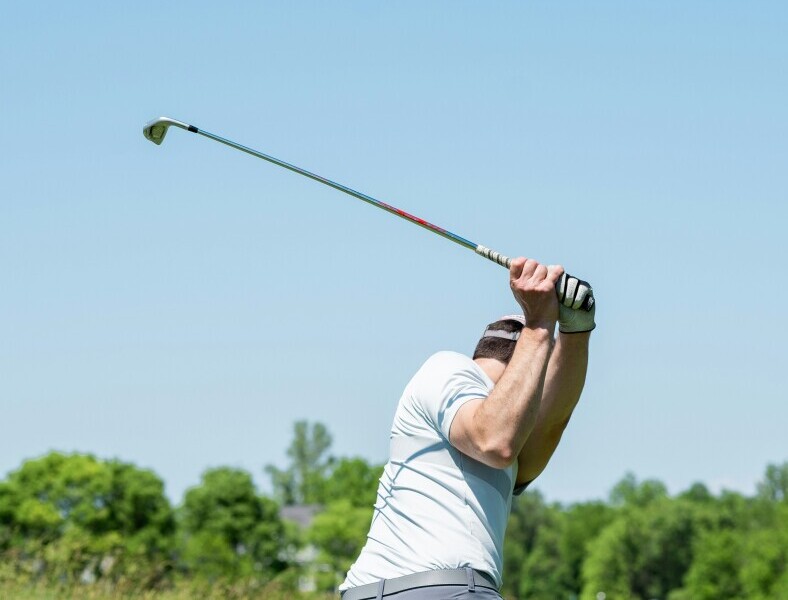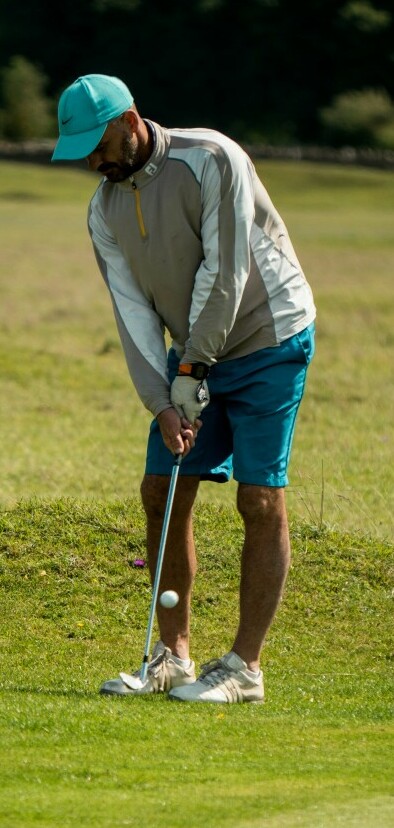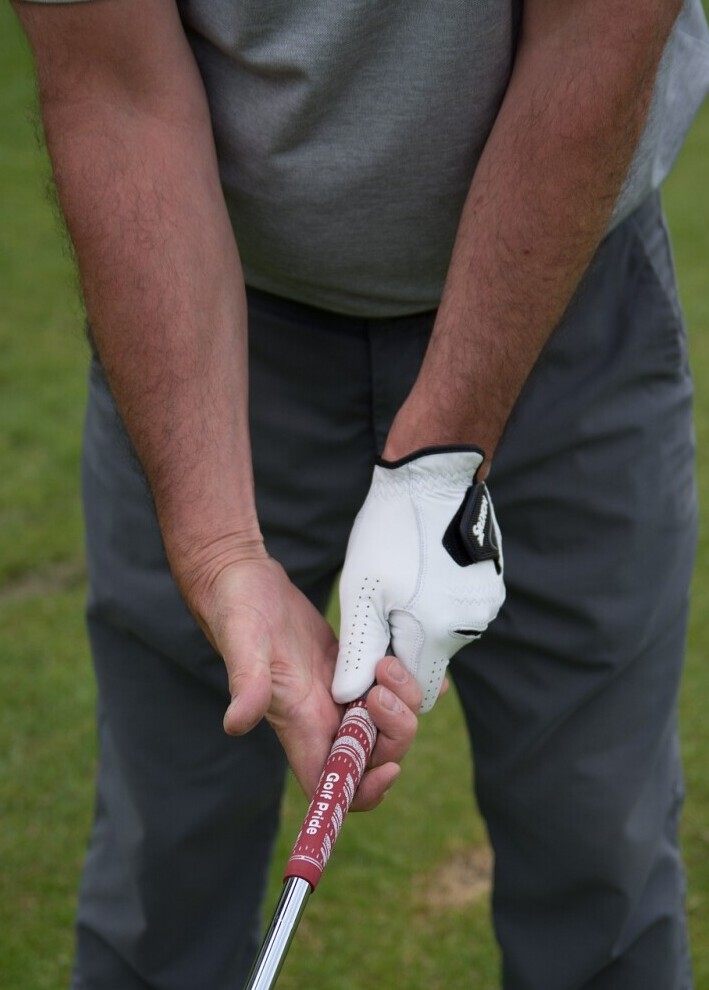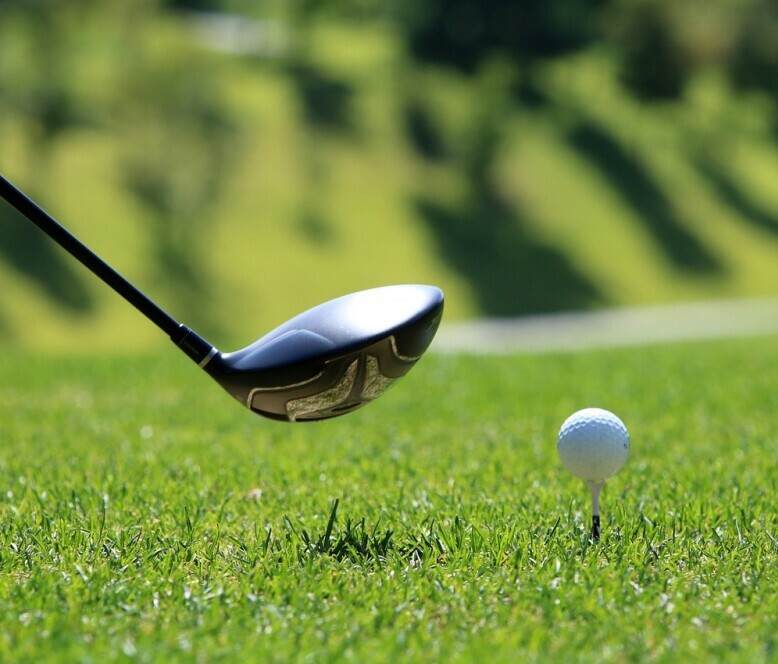What Is The Perfect Golf Grip?


Fore! Quick note: a few links here are affiliate links. If you snag gear through them, I earn a small commission — no extra strokes added to your game.
I’m going to open your eyes to something that might seem trivial but is actually key in golf: the grip. It’s the only point of contact you have with your golf club, and that alone should hint its importance. You will be stunned at how much influence the grip on the club has on your swing. And you will be thrilled when you see that by making small changes in your grip you can incredibly improve your golf swing. So the golf viking is here to guide you through what makes the absolute perfect golf grip.
You’ve probably heard this before, but I can’t stress it enough: A good grip greatly boosts your level of control over the club. Striking the ball with precision and the desired trajectory hinges on how you handle that club. Having a firm yet not tight grip on the club can be the difference between a good golf hit and a bad one.
It’s not just about direction; we’re also talking distance here. With a proper grip, you can transfer the power from your swing to the ball more effectively, driving it farther down the fairway. So this is something you should want to focus on if you are truly trying to improve your golf game. Working on other aspects of your game while having a poor grip will stall your progress. Get the right grip down from the start and work on your swing, and you will be setting yourself up for great strides in your game.
Your hands can take quite a beating over an 18-hole game. A solid grip that fits your unique style and strength will help you play longer and harder without the extra strain. Plus, a well-designed grip can ward off the risk of those pesky sports injuries, which have sidelined many a golfer in their prime. Having a loose grip and letting the club wobble in your hands can not only prove disastrous to your ball spot but can potentially mess up your wrist.
Now that you’re familiar with why a proper grip is pivotal, you might be wondering if there’s something amiss with yours. That’s going to include recognizing some common quirks and errors golfers often fall prey to. And guess what? They are often the culprits behind those frustrating inconsistencies in your game. Let’s delve into some common grip issues next. Once you can identify what you are doing wrong, you can quickly alter your grip.
The grip is the foundation of your swing. Once it feels natural, you can refine mechanics with mastering the golf swing.
Ready to level up your golf game? Click here.

Grasping the Issue: Common Problems with Golf Grips
Let’s talk about frequent trouble spots golfers hit when it comes to their grip. It’s not just a matter of holding the club; it’s about mastering the subtle nuances that can make or break your game. Little adjustments to your grip can make all the difference, so let’s discuss some common issues.
First off, let’s identify the signs that point to an improper golf grip. You might feel the club slipping during your swing, or maybe you’re developing calluses in strange places on your hands. These are red flags. You should not be getting your hands blistered every time you go out on the golf course. Having this can point to a serious problem with your grip.
Both rookies and seasoned pros can run into grip-related woes. A common problem among beginners is gripping the club too tightly or too loosely, while veterans might struggle with ingrained habits that need adjusting as their playing evolves in order to really improve their game in certain situations.
The size of the grip is another piece of the puzzle. If it’s too large or small for your hands, your control and comfort are going to suffer. It’s important for multiple reasons to have the right clubs for you. If you are working hard on your game but are using the wrong kind of clubs, it may feel like you are spinning your tires in the mud.
But in the case of grip, make sure that the size of the grip fits nicely in your hands and that the clubs doesn’t feel awkward in your hands as you swing. It may be that your club grip is too big or too small for your grip.
And let’s talk about hand placement – get this wrong, and it messes up everything from your swing path to the shot’s power. Understand that professional golfers may switch their hand placement depending on the type of swing they are trying to achieve, but for now we will just focus on a good, solid regular golf swing.
First wrap your left hand around the top of the grip. Your left thumb should be on top of the club. Now put your right hand around your left hand but lower on the grip. The bottom of your right hand should be in alignment with the thumb on your left hand. Wrap your fingers around the club with the palm of your right hand wrapping over the thumb of your left hand. Remember to keep your thumb on top of the club. Using this grip will help set you up for success with your golf swing.
Now, grip pressure is critical, and here’s where things get tricky. Too much pressure can lock up your wrists, robbing you of fluidity and power. Yet, if you’re too gentle, the club could twist at impact, leading to misfires. So it may take a little trial and error to find the perfect pressure, but look for the perfect spot between a grip that is too hard versus a grip that is too loose that it will move as you hit the ball.
Surprisingly, what many golfers think of as a firm grip is actually overbearing. It’s not about squeezing the life out of your club; you need a grip that’s secure enough to maintain control without stifling your natural swing rhythm. Firm to have control but loose enough to let the club do the work.
If your shots curve off target, grip adjustments can help. See how it ties into the ultimate guide for how to fix a slice.

The Pitfalls of an Incorrect Golf Grip
Let’s walk through what can go wrong if your golf grip isn’t up to par. This isn’t just about discomfort or minor issues; a bad grip can wreak havoc on your game and even lead to injury. You might be surprised to learn that many common golfing woes originate from how you hold the club. Don’t ruin a summer full of golf because you messed your wrist up with a sloppy grip.
Let’s start with shot accuracy. A grip that’s too loose or too tight impacts the clubface’s orientation at impact. If your grip isn’t right, you could struggle with hooks and slices instead of hitting it straight down the fairway. This can play a big factor in how well you do on the golf course, as hitting the ball awry of the fairway can always lead to trouble.
Next up is trajectory. An unsuitable grip can cause the ball to fly too high or too low. It’s like trying to control a kite in the wind without a proper handle – pretty challenging, right? You will never know how hard to hit a club if you can’t get a decent trajectory because your grip is too wild.
The distance your ball travels is also at stake. With a poor grip, you’re likely to compromise on power. Imagine losing precious yards on your drive, all because your hands weren’t positioned correctly. This is why you need to fix your grip now, so you don’t constantly struggle with getting good distance with your ball.
More than just your scorecard suffers. A bad grip can strain your muscles, leading to pain or even long-term injuries that sideline you. Your body’s doing its best, but without the proper grip, it’s like working overtime without the right tools.
Now, keep in mind that consistency is king in golf. If your grip changes from one swing to the next, your results will be unpredictable. We’re aiming for that sweet spot where muscle memory meets precision. So start with the right grip from the beginning, and you will be more consistent with your swing as you play.
With the stakes of a wrong grip so high, you’re probably eager to correct any mistakes. Good news: you can always adjust your grip. So, in the next section, I’m going to summarize for you the right way to grip your golf club for the best possible outcomes on the golf course. We’re talking about a step-by-step method that’ll set the stage for your best golf yet.
Even the short game benefits from a correct grip. Build touch and accuracy with how to putt golf ball.

Mastering the Grip: A Step-by-Step Guide to the Proper Technique
You have found out how the right golf grip is a game-changer. Nailing the proper technique isn’t just a nice-to-have; it’s essential if you want consistent, powerful shots. It’s important to pay attention to where you place your hands on the club. Your hands are your direct link to the club and ultimately your performance.
Today we went over the basic and best way to grip the golf club for beginners. There are however multiple grips you may try as you improve your knowledge of the game, choose something that resonates with you. Whether it’s the interlocking, overlapping, or ten-finger grip is up to you. As you get better you can experiment with different grips to help you with finding the perfect fit for your golf style.
Practice makes perfect, and I really hope that you give yourself the time to get comfortable with your grip. Engage in regular training sessions, using drills to hone your technique. Just don’t focus too much on perfection on your first attempt. You can always adjust your approach down the road.
If adjustments need to be made, like strengthening your grip or compensating for hand size differences, don’t hesitate. Maybe your fingers are longer or your palms wider. No problem. That’s the strategy I like to leverage: tailoring the grip to your unique physiology. You can test out different clubs to test out which works best for your hand size and style.
Consider professional instruction for a tailored fit. A pro can offer insights into the nuances of your grip and swing, leading you to those ‘aha!’ moments. Remember, your first attempt doesn’t need to be your last. Iterate. Improve. And above all, enjoy the journey of mastering your perfect golf grip.
Your grip can also influence distance control. Compare it with performance insights in average distance for each golf club.


